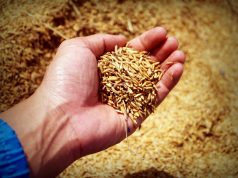‘America First’, a rhetoric that resonates so dearly to President Trump, acquired a new tone at the latest edition of the World Economic Forum. This rhetoric is no longer rhetorical. The past few months have marked the commencement of a trade strategy that creates artificial imbalances in the movement of free trade with the help of domestic legislations in an attempt to induce global production chains to ‘migrate’ to America. This strategy is simultaneously accompanied by a selective projection of trade concerns, where the focus is only limited to areas wherein trade in American exports is distorted by other countries — for instance, violation of Intellectual Property Rights and subsidies. Therefore, it becomes extremely significant to not only pierce through this motivated international campaign but also to critically analyze the structural possibilities of this ‘Great American Dream’.
The idea of ‘America First’ in U.S. Trade Policy reflects heavily upon the development in the manufacturing industry. The idea is to check competition by using tariff barriers such as Anti-Dumping Duties as well as to increase the existing tariff by invoking ‘safeguard’ clauses as mandated by Section 201 of the U.S. Trade Act, 1974. This tariff manipulation is envisaged to incentivise domestic producers, while hoping that no major negative impact will be seen in terms of consumer inflation and employment in service sector. One can see the United States International Trade Commission (USITC) being flooded with petitions asking for relief from the ‘damage’ caused by the import of certain consumer goods from Asian countries such as China, South Korea and India. However, what is hidden is the rationale applied by the USITC in conducting fair investigations and making sure that the petitions as well as its own reports comply with the obligations under WTO.
This ‘uncontested’ procedure is a matter of grave concern when it comes to implementing a rule-based international trade regime. Since the establishment of the WTO, none of the cases wherein invocation of safeguard measure clause was the matter of contention has been adjudicated in the favour of the United States. In addition to this, US has been constantly reminded by other members of its non-implementation of the Dispute Settlement Board’s (DSB) rulings. For instance, India highlighted its “significant concerns” about the steps taken so far by the US for implementing the DSB recommendations in the dispute concerning the countervailing duties on the Indian hot-rolled carbon steel products while Mexico sought authorisation for slapping trade retaliatory measures to the tune of US$472.3 million on American goods because of Washington’s repeated failures to comply with the DSB’s recommendation in the long-drawn dispute over import and sale of tuna and tuna products from Mexico. A Third World Network Report of March 2016 shows that most of the non-compliance by the US relates to the rulings given in the favour of the developing countries.
In the background of its bad reputation in implementing the WTO dispute resolution rulings, the Trump regime goes on to impose further import tariffs on washing machines from South Korea and solar panels from China. The use of heightened tariff barrier is not only against the commitments made by the US during the Uruguay Round negotiations, but the provisions applied from the domestic law are also not in compliance with the nation’s obligations under WTO. Section 201 of the U.S. Trade Act (1974), which permits the President to impose import tariffs or quotas for the ‘positive adjustment’ of competition if the domestic industry has been severely injured by the rising quantity of imports, has always been called out for its lack of compliance with Art XIX of GATT which lays down safeguard provisions. In all the cases where the measure taken under section 201 has been challenged before the DSB, the ruling has always struck down the measure.
One of the major reasons being, as mentioned in both the US Lamb (1999) and US Steel (2001) cases, is the absence of ‘unforeseen development’ in the conclusion of the investigation report. While Art XIX of GATT makes the presence of ‘unforeseen development’ mandatory for the invocation of the safeguard measure, the same is neglected in the drafting of Section 201.
Another bone of contention between WTO and Trade Act is the ‘causal connection’ requirement. To serve as a basis for a safeguard action, U.S. law requires the ITC to find that the increase in imports is a substantial cause of serious injury or threat thereof. Article 4.2(b) of the Agreement on Safeguards also requires the aggrieved party to demonstrate “the existence of the causal link between increased imports of the product concerned and serious injury or threat thereof.” However, the ITC and the WTO have interpreted this requirement quite differently. While the ITC requires that there be a causal link between imports and injury and that other sources of injury not be attributed to the imports at issue, the WTO has effectively established a requirement that the ITC must distinguish and weigh all of the possible alternative causes of injury other than the imports at issue.
It is the very nature of Section 201 that has made most of the American Presidents skeptical of its invocation for positive adjustment of trade. Out of the 40 investigations that voted affirmative for invocation of Section 201, the past Presidents have implemented the trade barriers only 19 times, that too the last one coming way back in 2001. A report by Peterson Institute for International Economic gives three reasons for such reticent behavior:
Import restrictions would increase the price of solar panels and washing machines to US consumers. In the case of solar, this would retard development of clean energy and negatively impact downstream employment prospects in solar panel distribution and installation.
Second, adversely affected trading partners may seek compensation for new US import restrictions that curtail their exports. This could arise via a formal WTO dispute, if not through alternative means of retaliation that hurts other US companies and workers.
It sends the signal to other American industries that the president is eager to grant discretionary trade protection. This could result in a flood of such requests. These will further increase business uncertainty, impose even more costs on the US economy, and increase the scope of trading partner retaliation.
One of the reasons for imposing such tariff can be the hope of Trump administration to force foreign companies to shift production base in the US mainland. In order to avoid the increased tariff, companies can shift their production base to the US, giving a fillip to the rate of employment in the manufacturing sector. For instance, Samsung is already planning to open up a production base in California. However, the short duration of these tariffs (mostly 3–4 years) does not provide enough incentive to the foreign companies to make such a shift as the costs incurred in the process of shifting production might be much larger than the reduction in profit due to increased tariff. Therefore, South Korea is planning to approach WTO for a dispute settlement as the companies producing large washers are not willing to shift their production base to the US. American Trade expert Chad P. Brown argues that this move by the Trump administration will lead to trade diversion where the volume of trade does not change much but the supplier moves from one country to another.
Economic theory also suggests that Trump’s new import restrictions would result in higher consumer prices and fewer purchases, thus imposing costs on the US economy. Other parts of the US renewable energy industry are likely to get severely affected from trade action against solar panel imports. The Solar Foundation finds that 85 percent of the 260,000 US industry jobs are outside of manufacturing. Employment in distribution and installation of panels would be put at risk if the price of solar energy increases and consumers such as utilities switch to different forms of electricity, such as wind, coal, or natural gas.
The manifestation of ‘America First’ rhetoric in the trade policy has a possibility of opening floodgates of complaints by American domestic producers under Section 201 of the Trade Act, severely affecting the anti-protectionism commitment of the US. Apart from Section 201, US has also been manipulating the anti-dumping provisions in order to impose further trade restrictions on imports. For instance, the Department of Commerce recently initiated anti-dumping investigations against Chinese aluminum foil sue moto, subverting the section VI of GATT which makes it mandatory for the complaint to be filed by the domestic producers in order to commence the investigation. Therefore, it can be safely said that the trade policy of Trump is anything but rule-based, and the same needs to be addressed at appropriate forums in order to maintain the relevance of the multilateral trade bodies such as WTO.
Post Disclaimer
The opinions expressed in this essay are those of the authors. They do not purport to reflect the opinions or views of CCS.






